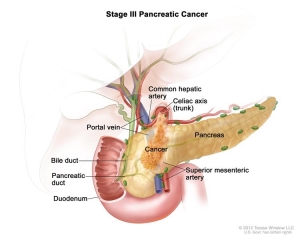The nutritional requirements of men and women differ. A woman’s body needs extra nutritional support during various physiological transitions such as puberty, menstruation, pregnancy, lactation, and menopause. Women are affected by different health problems than men and are more often diagnosed with autoimmune diseases, arthritis, osteoporosis, and depression. Despite popular belief that heart disease is a male problem, one in four menopausal women die from heart disease making heart disease, not cancer, the major cause of death of American women. At different stages of life, women benefit from properly selected micronutrients to assure the optimum function of the cells building the nervous, immune, cardiovascular, and endocrine systems.
Over 3 million Americans over 40 suffer from some sort of visual impairment. Vision loss is one of the major causes of disabilities, and age related eye diseases (AREDs) are rapidly becoming a public health problem in developed countries. Visual impairment caused by AREDs can lead to other serious health issues, including decreased mobility, depression, hip fractures, other accidents, and an overall lower quality of life. Most AREDs do not have effective treatments and it is important to maintain eye health and to prevent vision deterioration.
Heart attacks and strokes have consistently remained the leading causes of deaths. Atherosclerosis, the underlying cause of these diseases, results in 17 million deaths each year. Yet, high blood cholesterol levels, a fatty diet, and obesity have been blamed as the causes of heart disease. However, cutting down dietary fat and the artificial reduction of blood cholesterol with cholesterol-reducing medicines have not been successful in addressing this issue. Atherosclerotic plaques occur primarily in the coronary arteries rather than in the entire 60000-mile-long vascular system. The absence of plaque in the veins and the fact that animals do not suffer from atherosclerosis while humans do cannot be explained by conventional medicine and the cholesterol theory of heart disease.
Heart Failure is a serious health condition where the heart is unable to pump enough oxygenated blood to other parts of the body. According to the Centers for Disease Control and Prevention (CDC), about 5.1 million people in the US are affected by heart failure and about 40-50% of them die within one year of diagnosis. The economic impact of heart failure is huge, as the national heart failure treatment costs average about $32 billion including the work absences. Worldwide, approximately 23 million people suffer from heart failure.
Malnourishment is not hunger! Although global hunger is an ongoing struggle for more than one billion people, severe acute malnutrition is a more serious condition causing 45% of deaths in children under five years old. Worldwide, 34 million children are living with malnutrition, and every year at least one million of them die due to severe malnutrition and related diseases.
Every year the shift towards cold temperatures in winter marks the beginning of flu season in the northern hemisphere. The spread of the flu virus is further facilitated by people gathering and staying indoors and by people with compromised immune systems. Therefore, many turn to supplements to support their immune system and boost internal protection against viruses. However, in choosing supplements most of us miss an important aspect that is the efficacy of the supplements to support healthy blood production and a strong immune system. This may be a reason why some people, despite regularly taking vitamins, become sick simply, because their body may not be properly absorbing the supplements. This knowledge is particularly important and something we should retain, as we get older.
A primary brain tumor is a highly aggressive type of tumor originating from brain tissues. Secondary brain tumors are the tumors that spread to the brain from cancers originating in other parts of the body (such as melanoma, the lungs, breasts, kidneys, and colon). The US estimates 23,380 adults will be diagnosed with primary brain tumors in 2014 and approximately 14,320 adults will die from those tumors. European statistics reported 57,132 cases of malignant brain tumors according to a 2012 statistical report.
The pancreas, located directly behind the lower part of the stomach, is a vital organ secreting various digestive enzymes and hormones (e.g. insulin) that regulate blood sugar levels in the body.
Cancer of the pancreas is a serious and almost always fatal disease. It is the twelfth most common cancer in the world with 338,000 new cases diagnosed in 20121. However, it is projected that pancreatic cancer will be the second deadliest cancer by 2030. According to the American Cancer Society’s 2014 estimates, 46,420 people will be diagnosed with pancreatic cancer in the US and 39,590 deaths are expected to be due to this disease. In Europe, there were approximately 103,845 cases of pancreatic cancer in 2012. Only 4-5% of the people diagnosed with pancreatic cancer live beyond 5 years after their diagnosis. This is because pancreatic cancer is usually diagnosed at a very late stage due to a lack of specific symptoms and, similarly to other cancers, no effective cure is available.
Gum disease affects everyone and is not exclusively a childhood disease. The Centers for Disease Control and Prevention (CDC) estimates about half of all American adults tend to have advanced gum disease at the time of diagnosis. This is because gum disease rarely produces uncomfortable symptoms until it is in late stages. While dentists look for specific signs to diagnose gum disease, certain symptoms may indicate underlying gum problems. Symptoms such as red, swollen, and painful gums, bleeding while brushing and flossing, constant bad breath, or a bad taste in mouth due to bacterial infection in gum pockets, warrant attention and further evaluation. There are studies proving a connection between gum disease and other systemic conditions such as heart disease, stroke, rheumatoid arthritis, diabetes, and many others.
Excluding skin cancer, breast cancer is the most common cancer in women in the US, and about 1 in 8 women are likely to develop it during their lifetime. The American Cancer Society estimates that in 2014, about 232,670 new cases of invasive breast cancer, and 62,570 of noninvasive (in-situ) breast cancers will be diagnosed in the US. Worldwide approximately 1.38 million new cases are diagnosed and 458 000 deaths occur from breast cancer each year.









